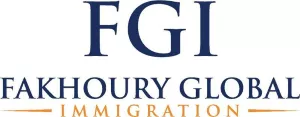The H-1B visa classification is one of the most popular visa options available to U.S. employers that are seeking to temporarily employ foreign workers in the U.S. Subject to an annual limit of 85,0001 new H-1B workers, employers have seen more demand for this visa category over the last decade than the statutory limits allow.2 As a result, after the H-1B cap cases are selected for processing, many employers are left looking for alternative visa categories to bring critical resources to the U.S. This article will provide a historical perspective of the demand over the last few years as well as an overview of some of the alternatives that employers may consider for employees whose names were not selected for H-1B processing.
Alternatives for the H-1B Category
Because of the high demand for the H-1B category, coupled with the limited number of spots available, many employers are left determining what, if any, other nonimmigrant visa categories are appropriate for critical resources whose H-1B registrations were not selected for processing. As explained in detail below, there are several different visa categories for employers to consider when seeking to employ an individual temporarily in the U.S:
- H-1B1 and E-3 Categories: This category is similar to the H-1B category with respect to both the requirements and the type of work allowed. However, this category is reserved for individuals who have either Chilean or Singaporean citizenship. While there are statutory limits as to the number of individuals awarded this visa each fiscal year, because of overall lower demand by both Chilean and Singaporean nationals the annual limits are often not met, giving employers flexibility as to when they may file. Additionally, for individuals outside the U.S., once a certified Labor Condition Application (LCA) is obtained from the U.S. Department of Labor (DOL), this visa classification allows them to apply for the visa directly with the U.S. Consulate without prior approval from the USCIS unlike many visa categories. For foreign workers already in the U.S. seeking to change status or employers, the new U.S. employer may file for this visa with the USCIS. However, the next time the foreign national departs the U.S. and seeks to apply for the H-1B1, the U.S. Consulate will fully adjudicate the request as if it were new. As such, employers will need to prepare their employees accordingly.
Individuals who have Australian citizenship may benefit from the E-3 category. The E-3 category is similar to the H-1B category with respect to both the requirements and the type of work allowed. Like the H-1B1 category, while there are statutory limits to the number of new E-3 visas issued each fiscal year, this number is often not met, providing employers with flexibility as to when they may utilize this visa category. Additionally, for foreign nationals who are currently outside the U.S., once a certified LCA is obtained from the DOL, they are eligible to file for the E-3 visa directly with the U.S. Consulate without prior USCIS approval. For foreign workers already in the U.S. seeking to change status or employers, the new U.S. employer may file for this with the USCIS. However, the next time the foreign national departs the U.S. and seeks to apply for the E-3 visa, the U.S. Consulate will fully adjudicate the request as if it were a new request.
- TN Category: This category is only available to individuals who have either Canadian or Mexican citizenship. Unlike the H-1B category, which provides employers with high-level requirements as to the type of qualifying positions for the visa category, the TN category has a specific list of permissible professions. Because of this structure, a foreign national who may otherwise qualify for sponsorship under the H-1B category may not be eligible for the TN category if their specific occupation is not included on this list. For foreign national workers who are Mexican citizens and are outside the U.S., they will first need to obtain the TN visa from the U.S. Consulate prior to entering the U.S. in TN status. For Canadian citizens, because they are visa exempt, they may apply for admission in the TN status with the U.S. Customs and Border Protection (CBP) at the port of entry into the U.S.
- E-1 Category: The E-1 category applies to treaty investors. The purpose of this visa category is to help facilitate trade between the U.S. and its partner countries across the globe.3 Like the H-1B1, E-3, and TN classifications, the E-1 classification is available to individuals with citizenship from certain countries that maintain treaties of commerce and navigation with the U.S. The E-1 visa category allows individuals to enter the U.S. to take up employment based on commerce that will be conducted in the U.S. and that helps to facilitate trade between the U.S. and their home country. In order to qualify, the E-1 candidate must hold the same citizenship as the majority of the business owners (i.e., over 50%) and over half of the trade must be between the U.S. and the home country. A list of all treaty countries can be found at: https://travel.state.gov/content/travel/en/us-visas/visa-information-resources/fees/treaty.html.
- E-2 Category: Like the E-1 category, the E-2 category applies to treaty investors. The purpose of this visa category is also to help facilitate the trade between the U.S. and its partner countries across the globe.4 Unlike the E-1 category, the E-2 category allows both the individual making the investment and non-investor employees of the business to live and work in the U.S. For non-investor employees to qualify for the E-2 classification, the foreign worker must hold the same nationality of the principal alien employer; must meet the definition of an "employee" under the law; and he or she must be working in the U.S. in a role that is either executive or supervisory in nature, or if in a lesser role have special qualifications.
- L-1 Category: The L-1 category is for international transferees. This category requires the foreign national to have spent at least one (1) year in the three (3) years prior to coming to the U.S. working for an entity related to the U.S. employer (e.g., a parent, subsidiary, affiliate, etc.) outside the U.S. in a role that was either managerial, executive, or specialized knowledge in nature. The role in the U.S. must be managerial or executive in nature or requires the foreign national to apply his or her advanced and/or specialized knowledge on a day-to-day basis. Unlike the H-1B category there are no statutory limitations on the number of the L-1 petitions a company files each fiscal year. Additionally, for companies that meet certain statutory requirements, the L-1 Blanket process may be available to expedite the movement of L-1 employees at the U.S. Consulate abroad.
- O-1 Category: The O-1 category is for foreign nationals who have "extraordinary ability in the sciences, arts, education, business, or athletics, or who has a demonstrated record of extraordinary achievement in the motion picture or television industry."5 To qualify for the O-1 category as someone with extraordinary ability in the sciences, arts, education, business, or athletics, the sponsoring employer must demonstrate that the prospective O-1 worker has either achieved at least one (1) major award (e.g., a Nobel Prize) or at least three (3) lesser achievements (e.g., prizes in the individual's area of expertise; membership in associations for their area of expertise; publications in trade papers or major media; a high salary compared to others in the industry; etc.). Individuals who intend to demonstrate an extraordinary achievement in the motion picture or television industry must demonstrate one (1) major award (e.g., Emmy) or three (3) lesser achievements (e.g., leading or critical roles, having a commercially or critically acclaimed album, etc.).
Conclusion
While the demand for the H-1B program is clear, its popularity can make it difficult for employers to gain the opportunity to sponsor a worker under this category. As a result, employers will need to consider other nonimmigrant visa categories to sponsor individuals not selected as part of the H-1B cap.
Footnotes
1 This amount is split between 65,000 "regular" H-1B cap selections that allow for individuals who have at least a Bachelor's degree, or the equivalent, and 20,000 H-1B Master cap selections that are set aside from individuals who graduated from a U.S. institute of higher education with at least a Master's degree or higher.
2 For example, for this upcoming fiscal year, of the 483,927 registrations received only 127,600 were selected for processing. This translates to an approximate selection rate of 26%. See the USCIS' website at: https://www.uscis.gov/working-in-the-united-states/temporary-workers/h-1b-specialty-occupations-and-fashion-models/h-1b-electronic-registration-process. Last accessed April 22, 2022.
3 The full list of countries with whose citizens are eligible for the E-1 and/or the E-2 classification is available at the U.S. Department of State's website at: https://travel.state.gov/content/travel/en/us-visas/visa-information-resources/fees/treaty.html . Last accessed April 15, 2022.
4 Id.
5 See 8 CFR §214.2(o)(1)(i).
The content of this article is intended to provide a general guide to the subject matter. Specialist advice should be sought about your specific circumstances.

